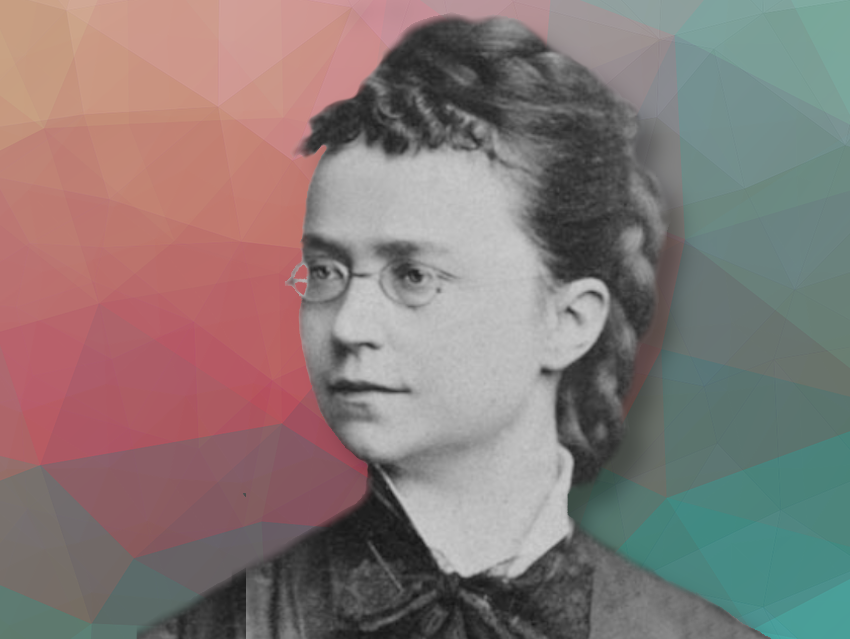On May 15, 1874, Lydia Sesemann became the first woman to be awarded a doctorate in chemistry by the Second Section of the Faculty of Philosophy at the University of Zurich in Switzerland [1]. No other female chemist in the world is currently known to have received a doctorate earlier.
But who knows her name?
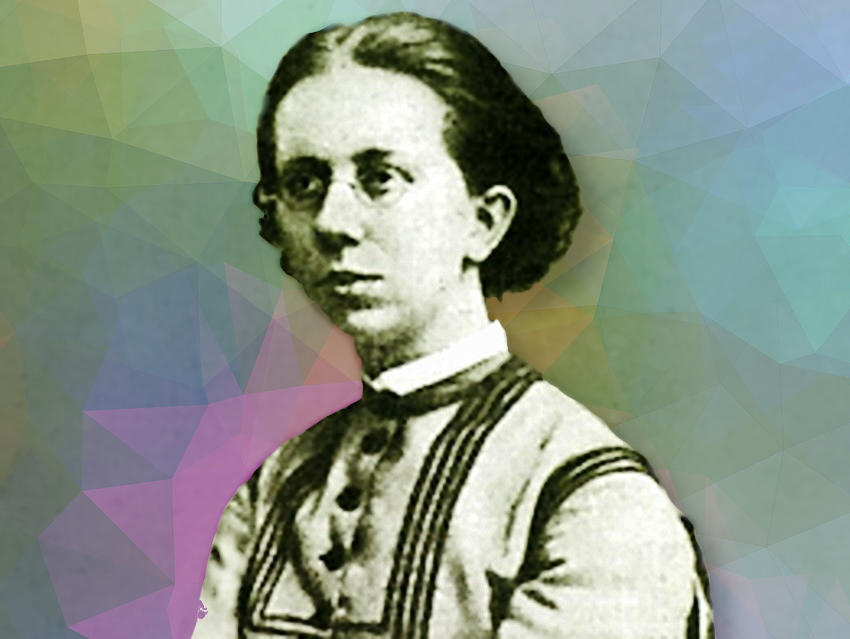 In fact, Lydia Sesemann has been long forgotten, although the physician Franziska Tiburtius (1843–1927), for example, who received her doctorate in Zurich in 1876, describes her in her memoirs as the “clever Finn” [2]. Finnish and Swedish sources also remember her, but she is so unknown in German- and English-speaking countries that Julia V. Lermontova (1846–1919; pictured on the right) was long considered the first woman to obtain a doctorate in chemistry.
In fact, Lydia Sesemann has been long forgotten, although the physician Franziska Tiburtius (1843–1927), for example, who received her doctorate in Zurich in 1876, describes her in her memoirs as the “clever Finn” [2]. Finnish and Swedish sources also remember her, but she is so unknown in German- and English-speaking countries that Julia V. Lermontova (1846–1919; pictured on the right) was long considered the first woman to obtain a doctorate in chemistry.
Most traces of Lydia Sesemann disappeared after her doctorate, although she remained a member of the German Chemical Society for many years. The 150th anniversary of her doctorate should be an occasion to remember this woman and try to trace her life.
1 Lydia Sesemann from Wiborg
Lydia Maria Sesemann was born in Wiborg on February 2/14, 1845. The town was called Wiburg in the first half of the 19th century. The Finnish name is Viipuri, the Swedish Viborg. (I shall use “Wiborg” in the following text because Lydia Sesemann used this name for the town of her birth.)
The cosmopolitan town was an important trading centre in the Middle Ages. It was involved in the Baltic trade of the Hanseatic League, but was never a member of the League itself. During the Northern Wars, Wiborg was a Swedish base against the Novgorod Rus. Wiborg capitulated in 1710 and became part of the Russian Empire. From 1809 to 1917, Finland as a whole was part of the Russian Empire, but retained a large degree of autonomy as the Grand Duchy of Finland. The German population was 12.5% in 1812 and 4.5% in 1870. They continued to speak German, but often also Swedish, Russian and occasionally Finnish. The education system was dominated by German teachers, but they “felt and wrote for Finland” [3]. After the First World War, Wiborg became part of independent Finland. During the Winter War of 1939/40 and the Continuation War of 1944, the Soviet Union occupied most of Karelia, including Viburg (today’s name is Vyborg = Выборг).
Lydia Sesemann’s family also had German ancestors. The Lübeck merchant Hans David Conradsson Sesemann (1630–1696) was probably the first member of the family to come to Wiborg with other Lübeckers in the 17th century [4]. Lydia’s father Mikael Carl Sesemann (1797–1865) was a wholesale merchant, a partner in the timber trading company Rosenius & Sesemann, founded in 1830, and Danish consul. After the early death of his first wife, he married Antonie Williams – Lydia’s mother – who was born in Vyborg in 1822 [6].
After Mikael Carl’s death, Antonie moved to Stuttgart in Germany with two of her daughters [7], according to Lydia Sesemann’s curriculum vitae in the doctoral dossier, which she probably wrote herself, but which contains an incorrect year of birth. This shows that she was educated at a private institute in her home town.
The CV continues that Lydia Sesemann continued to prepare for her academic studies in Germany. She took private lessons, particularly in mathematics and Latin. In 1869, she “went to Zurich, where she was enrolled at the Faculty of Philosophy and made the natural sciences, especially chemistry, the subject of her studies” [7]. She enrolled at the Faculty of Philosophy under the number 3617.
2 At the University of Zurich
Founded in 1833, the University of Zurich was the first European university to officially open its doors to female students. The first phase could be said to have begun as early as 1840, when the first female students were allowed to attend lectures there. In 1864, a Russian woman applied for permission to attend lectures at the university. There was no explicit ban on women studying in the Zurich Education Act of 1859, so her application was approved. However, it was not until Nadežda Suslova (1843–1918) applied for a doctorate that the administration began to take women’s studies seriously. As a result, she was enrolled retroactively on February 1, 1867, for the winter semester of 1866/67.
For the winter semester of 1871, 31 women were enrolled at the University of Zurich, rising to 63 for the summer semester of 1872. During that year, the minimum age for enrollment was raised to 18. By the summer of 1873, the number of female students had risen to 114. Among them were many foreign women, especially Russian women. Until 1873, those who did not come from the Canton of Zurich, were not required to present a school-leaving certificate for admission to the university, but only a certificate of good conduct [8].
As Lydia Sesemann came to Zurich in 1869, she did not need a school-leaving certificate (Matura). Her previous education must have been comparatively good, and she obviously pursued her studies with determination. She was aware of the problem of the different requirements for studying, especially for women students, which is why, together with five other fellow students, namely Marie Bokova (1839–1929), Frances Morgan (1843–1927), Marie Vögtlin (1845–1916), Suzan Dimock (1847–1875), and Eliza Walker (1849–1925), she submitted a petition to the Rector and the Senate of the University of Zurich on February 22, 1870, calling for stricter standards for previous education. It stated:
“We women students therefore address ourselves to the Rector and the High Senate of the University with the request that they ask the Education Department of the Canton of Zurich to issue a decree to the effect that henceforth only those women may be admitted to the University here who have either passed the Matura examination here or who can produce a certificate from public teachers in their home country corresponding to the Matura examination. Only this restriction seems to us to make it possible to ensure for all time that women who have sufficient ability to carry out their undertaking will be able to attend the university here, while at the same time preventing the entry of those who wish to attend the university without the necessary previous education” [9].
Many of the female students from the Russian Empire were politically active and in contact with revolutionary circles in Zurich [10]. Officially because of moral debauchery, but in reality because of the anarchist activities of some students, the Russian Tsar issued a decree on June 4, 1873, banning all Russian women from studying in Zurich. They were ordered to leave Switzerland by the end of the year. Failure to do so could result in sanctions and a ban on employment. Most Russian female students left Zurich. In the spring semester of 1874, only six of them continued their studies, three in medicine and three in philosophy, including Lydia Sesemann. It can be assumed that she had no intention of returning to the Russian Empire, to which Finland also belonged.
A report by Franziska Tiburtius [11] gives an insight into Lydia Sesemann’s circle of colleagues:
“[p. 148] Our colleague from the chemistry faculty, Dr. Lydia Sesemann, the clever Finn, had finished her university studies and was about to leave Zurich. She invited all of us who had been close to her over the past few years to her farewell party, and it turned out to be a very interesting and pleasant occasion. […] At first I had some misgivings about going, for I was afraid that the whole evening would be spent speaking Russian [p. 149], or that I would embarrass the others if they refrained from doing so out of consideration for me. But Dr. Sesemann told me that she didn’t like to speak Russian either, and that she would ask from the beginning to stick to German, which everyone knew.”
Franziska Tiburtius then named the following people, whom she also briefly characterized:
“1. Dr. Lydia Sesemann, blonde, a bit stiff, very educated, but likes to laugh. 2. Miss Sinclair […] 3. Miss Koladiew […] 4. and 5. Miss v. Stoff and Miss Hesse […] 6. Miss Tiburtius […] 7. Dr. Harutium Tigranes Abeljanz. 8. The most important person in the circle was probably Dr. Ehrismann, the Swiss student who married the Russian Suslowa, the first woman to study and obtain a doctorate in Zurich […] 9 Mr. Theodor Egli. […] Miss Sesemann had provided splendid food in kind – roast capons, wine jelly, cakes, etc., wine, oranges and tea; we did not go home until after 1 o’clock, very satisfied. Unfortunately, I never heard from Dr. Sesemann again after she left Zurich.” [12–18].
When Lydia Sesemann came to Zurich in 1869, Johannes Wislicenus (1835–1902) was working there. From 1864 to 1867, he was an extraordinary professor of chemistry and director of the chemical laboratory at the University of Zurich, becoming a full professor in 1867. At the same time, he was a professor at the Swiss Federal Polytechnic. In 1871, he was succeeded by Viktor Merz (1839–1904), who had already been an extraordinary professor from 1869 to 1870. Merz worked closely with Wilhelm Weith (1846–1881), who was appointed extraordinary professor in 1871.
2 Doctoral Thesis
Lydia Sesemann worked on her dissertation under the supervision of Merz and Weith, who worked mainly in University Laboratory II, located in the cantonal school at Rämistrasse 59 (see Fig. 1), which still exists today [19]. It can be assumed that Lydia Sesemann also did her research there.
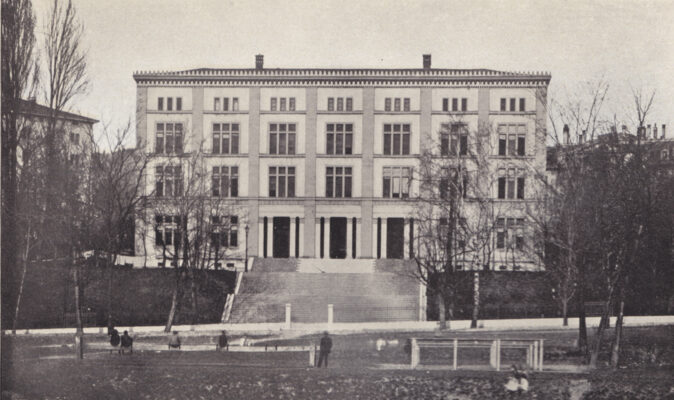
Figure 1. The building of the old cantonal school in Zurich, Rämistrasse 59, around 1910.
(Photo by Hofer & Co. Zürich in public domain)
Lydia Sesemann worked on the problem of benzylic and dibenzylic acetic acid. As early as July 1873, she was the sole author of an article on her findings published in the Berichte der Deutschen Chemischen Gesellschaft [20].
In 1874, Zürcher and Furrer published the paper “Ueber Dibenzylessigsäure und eine neue Synthese der Homotoluylsäure” [21]. It also appeared in 1874 in the quarterly journal of the Naturforschende Gesellschaft in Zürich [22]. Lydia Sesemann was not a member of this society.
This work was Lydia Sesemann’s doctoral thesis (see Fig. 2). On May 6, 1874, she wrote to the Dean: “On the basis of the enclosed thesis [Ueber Dibenzylessigsäure und eine neue Synthese der Homotoluylsäure] and my previous course of study, I take the liberty of requesting the Faculty of Philosophy to award me the degree of a Doctor of Philosophy” [23]. The Dean then arranged for expert reports to be drawn up.
These were positive. The Weith’s report stated:
“Ms. Sesemann’s dissertation is certainly one of the best that have been presented to our department; it undoubtedly demonstrates the author’s ability to conduct independent research. The introduction, which contains general and theoretical observations on the subject of the study, is clear, concise and exhaustive, proving that the author has familiarized herself with the relevant literature” [23].
The second expert, Gustav Adolf Kenngott (1818–1897) who worked as a mineralogist at the university and at the Polytechnic, agreed with this assessment. Both recommended that the doctorate be awarded. The doctorate was conferred in absentia on May 15, 1874 [24].
The results of Lydia Sesemann’s work are mentioned in numerous publications. The supervisors published them in the Berichte der Deutschen Chemischen Gesellschaft, mainly because “the work is unlikely to be continued in the local laboratory, so we do not want to withhold the results once they are available” [25]. August Kekulé (1829–1896) later mentioned Lydia Sesemann’s investigations [26,27]. They were also included in Hermann Fehling’s (1811–1885) Neues Handwörterbuch der Chemie [28]. Henry E. Roscoe (1833–1915) also referred to her findings in his Lehrbuch der Chemie [29].
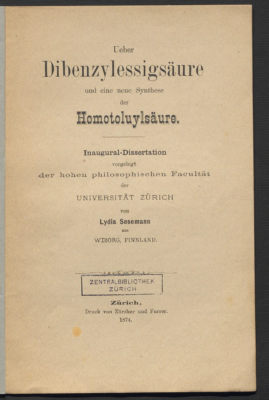
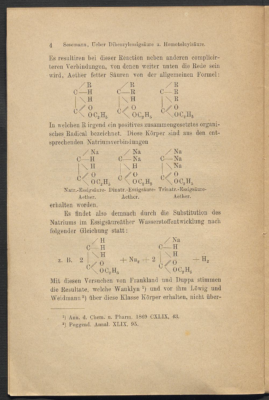
Figure 2. Cover and a page of the dissertation of Lydia Sesemann.
(Sesemann, Lydia: Ueber Dibenzylessigsäure und eine neue Synthese der Homotoluylsäure. Zürich : Zürcher und Furrer, 1874. Zentralbibliothek Zürich, Switzerland, UnTur 1103; https://doi.org/10.3931/e-rara-96717 / Public Domain Mark)
3 What Happened to this Successful Chemist?
But what happened to Lydia Sesemann, to this apparently so successful chemist? By April 24, 1874, she had already been expelled from the University of Zurich [30].
A reference to a stay in Leipzig can be found in Berichte der Deutschen Chemischen Gesellschaft. At the board meeting on January 15, 1877, Lydia Sesemann was proposed for membership of the German Chemical Society by Alfred Keil and Louis Ehrlich [31] from the Physical-Chemical Laboratory [32]. She was appointed as extraordinary member on February 12, 1877 [33]. The first female member of the German Chemical Society was Maria S. Eaton, she was admitted on March 27, 1876 [34].
|
Franz Alfred Keil and Franz Louis Ehrlich were assistants to Gustav Wiedemann at the time. The latter was director of the “Second Chemical Laboratory”. Keil, who was born in Leipzig in 1850 and died there in 1915, had studied at the University of Leipzig from the summer semester of 1869 to 1874. He was with Wiedemann until 1880. Ehrlich, born in Austerwitz near Döbeln in 1849, devoted himself to pharmacy in Leipzig from 1871, later moved to Würzburg with J. Wislicenus and obtained his doctorate in 1875 with the thesis “On benzyl acetate acetic acid esters”. He returned to Leipzig and also stayed with Wiedemann until 1880 [31]. |
Lydia Sesemann’s path can be partially traced from the membership lists [35]. She was probably in Leipzig until 1882, in Frankfurt am Main in 1884, in Wiesbaden from 1885 to 1887, in Florence from 1889 to 1892 and then in Lausanne or Mont-Lausanne. The last entry in the list of members is in 1901.
In Leipzig, Lydia Sesemann might have worked in Gustav Wiedemann’s Physical-Chemical Laboratory, where Keil and Ehrlich were also assistants. However, there is no trace of her in the archives of the University of Leipzig. No publications seem to have been produced during this period. The situation regarding the cities of Frankfurt am Main and Wiesbaden is even more difficult. Neither the registration card index nor the address books prove that Lydia Sesemann lived in Frankfurt. In Wiesbaden, the historical registration documents were destroyed in an air raid.
The archive in Florence was also unable to find any evidence of Lydia Sesemann’s stay there. It is interesting to note, however, that a publication by Guido Pellizzari (1858–1938) mentions that Lydia Sesemann translated his text into German.
There are several residence permits in Lausanne. The known addresses suggest that she was in contact with the Société de l’Union chrétienne. The Indicateur Vaudois for the year 1896 states that Lydia Sesemann was a teacher [36].
Lydia Sesemann left Lausanne in 1907. Together with her sister Helene, she went to Munich, where her mother lived from 1892 until her death in 1896 [37]. Lydia Sesemann died in Munich on March 28, 1925.
4 First Woman in Chemistry
Based on the information about Lydia Sesemann’s life after her doctorate, it can be assumed that she tried to work professionally for a few more years. Her longstanding membership of the German Chemical Society also suggests this. It remains unclear how intensive her research activities were in Leipzig and possibly in Florence. The fact that she was a woman probably made a further scientific career impossible.
To what extent she was involved in the movement for women’s rights and women’s education is also unknown. We do know that she was a friend of Hope Bridges Adams Lehmann (1855–1916), the first female general practitioner and gynecologist in Munich and a fighter for gender equality. In a letter, Adams Lehmann encouraged the women’s rights activist and art patron Ida Dehmel (1870–1942) to make contact with “my dear old friend Fräul. Dr. (chem.) Lydia Sesemann Montbenon – Gare Maison Dentan Lausanne” (see Figs. 3 and 4) [38,39].
Even if Lydia Sesemann’s path after her doctorate cannot be clarified in detail, she should be remembered as the first woman to receive a doctorate in chemistry.
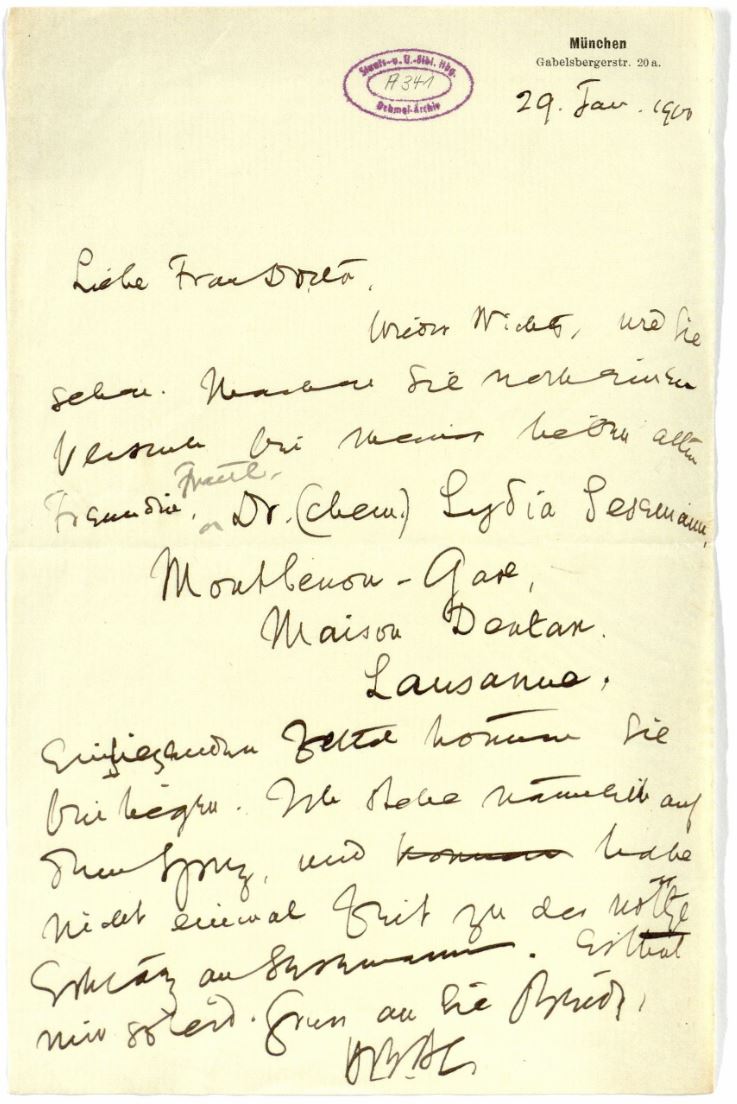
Figure 3. Letter to Ida Dehmel from Hope Bridges Adams Lehmann.
(from Staats- und Universitätsbibliothek Hamburg SUB Hamburg: DA : Br. : A : 341)
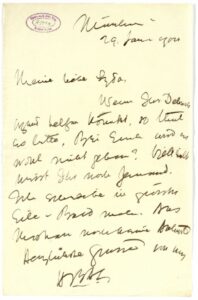
Figure 4. Letter to Lydia Sesemann from Hope Bridges Adams Lehmann.
(from Staats- und Universitätsbibliothek Hamburg SUB Hamburg: DA : Br. : A : 341a)
Acknowledgements
I would like to thank the following people and institutions for their support of this work: Lothar Beyer (Leipzig), Ernst Homburg (Maastricht), Helmut Reinke and Leena-Maija Åberg-Reinke (Helsinki), Maria Vittoria (Rome) Archives of the City of Lausanne; City of Zurich, City Archives; State Archives of the Canton of Zurich; University of Zurich, UZH Archives; Archives for Women’s, Gender and Social History of Eastern Switzerland; Stuttgart, Cultural Office, City Archives; Munich, City Archives; Frankfurt am Main, Institute for City History; Wiesbaden, City Archives Zurich Central Library and University Library Rostock.
References
[1] Zurich State Archives: StAZH Z 70.3093 (pp. 43–62), Report of the Academic Senate on the effectiveness of the University of Zurich from Easter 1874 to Easter 1875, p. 61.
[2] Franziska Tiburtius: Erinnerungen einer Achtzigjährigen, Berlin: C. A. Schwetschke, Aufl. 3, 1929, p. 148.
[3] Compare for this part: Robert Schweitzer: Die Wiborger Deutschen. Stiftung zur Förderung deutscher Kultur. Helsinki – Helsingfors 1993, online: https://www.doria.fi/bitstream/handle/10024/170920/die_wiborger_deutschen.pdf?sequence=1&isAllowed=y, quotation p. 54.
[4] Erich Gercken, Lübecker in Finnland, Mitteilungen der Geographischen Gesellschaft zu Lübeck 1988, 57, 31-46, here 35.
[5] Data according to geni.com
[6] There is no evidence of this in the Stuttgart City Archives (information from November 29, 2023). Antonie Sesemann can be found in the respective telephone directories of Stuttgart in 1867 (p. 164), 1868 (p. 172), 1869 (p. 181), 1870 (p. 185), 1871 (p. 190), 1872 (p. 211), 1873 (p. 224), and 1874 (p. 236).
[7] State Archives of the Canton of Zurich, doctoral dossier Lydia M. Sesemann StAZH_U_110_6_77
[8] Compare for this part: Susanna Woodtli: Gleichberechtigung: der Kampf um die politischen Rechte der Frau in der Schweiz. Frauenfeld: Huber; Gabi Einsele: Kein Vaterland. Deutsche Studentinnen im Zürcher Exil (1870–1908). In: Anne Schlüter (ed.): Pionierinnen – Feministinnen – Karrierefrauen? Zur Geschichte des Frauenstudiums in Deutschland. Frauen in Geschichte und Gesellschaft Vol. 22. Centaurus, Pfaffenweiler 1992.
[9] Susanna Woodtli: Gleichberechtigung: der Kampf um die politischen Rechte der Frau in der Schweiz. Frauenfeld: Huber, 1975, pp. 228–229.
[10] Anja Burchardt: Blaustrumpf – Modestudentin – Anarchistin? Deutsche und russische Medizinstudentinnen in Berlin 1896–1918. Stuttgart: Metzler, 1997.
[11] Tiburtius, Erinnerungen.
[12] Probably Julie Sinclair, married Egli (1849–1937). Compare: https://www.matrikel.uzh.ch/active/static/about.htm
[13] Probably Catharine Koladejew (1851–?). Compare: https://www.matrikel.uzh.ch/active/static/about.htm
[14] Probably Olga von Stoff, married Siebold (1848–?). Compare: https://www.matrikel.uzh.ch/active/static/about.htm
[15] Probably Sophie Hasse (1846–1925). The name Hesse does not exists in the Matrikel. Compare: https://www.matrikel.uzh.ch/active/static/about.htm
[16] Haruthiun Tigran Abeljanz (1849–1921) was a Swiss-Armenian chemist.
[17] Friedrich Huldreich Erismann (1842–1915) was a Swiss ophthalmologist and hygienist.
[18] Theodor Egli (1844–1932). Compare: https://www.matrikel.uzh.ch/active/static/about.htm
[19] C. H. Eugster: “150 Years of Chemistry at the University of Zurich,” Chimia, 2008, 62(3), 75-102. https://doi.org/10.2533/chimia.2008.75
[20] Lydia Sesemann: Über die benzylierte und dibenzylierte Essigsäure. Berichte der Deutschen Chemischen Gesellschaft 6 (1873) 1085-1087. Reference to this work was made for example in Chemisches Zentralblatt 4 (1873) p. 665 and in Jahresberichte über die Fortschritte auf dem Gebiet der reinen Chemie 1874, p. 324.
[21] Lydia Sesemann: Ueber Dibenzylessigsäure und eine neue Synthese der Homotoluylsäure. Zürich: Zürcher and Furrer 1874.
[22] Lydia Sesemann: Ueber Dibenzylessigsäure und eine neue Synthese der Homotoluylsäure. Vierteljahrsschrift der Naturforschenden Gesellschaft Zürich 19/1(1874)1–26.
[23] State archives of Canton Zurich: Dossier of Sesemann’s dissertation StAZH_U_110_6_77.
[24] Annual reports of the University of Zurich since 1833 online, http://www.staatsarchiv.zh.ch/query, StAZH Z 70.3093
04.1874-03.1875
[25] Viktor Merz, Wilhelm Weith: Mitteilungen aus dem Universitäts-Laboratorium Zürich, Berichte der Deutschen Chemischen Gesellschaft 10 (1877) 746-765, here 758. Reference is made to this article in Chemisches Zentralblatt 8 (1877) 405.
[26] August Kekulé: Lehrbuch der Organischen Chemie oder der Chemie der Kohlenstoffverbindungen. Volume 3. Stuttgart: Enke 1882, p. 379
[27] August Kekulé: Chemie der Benzolderivate oder der aromatischen Substanzen. Vol. 3. Erlangen: Enke 1882, p. 537.
[28] Hermann Fehling: Neues Handwörterbuch der Chemie. Volume 1, Braunschweig: Vieweg 1874, p. 1189.
[29] Henry Roscoe: Ausführliches Lehrbuch der Chemie. Vol. 4., Braunschweig: Vieweg 1889, p. 927.
[30] https://www.matrikel.uzh.ch/active/static/20158.htm
[31] Bodo Geyer, Dieter Michel: History of Physics at the University of Leipzig: Physics and its interdependence with mathematics and neighboring disciplines during the 600th anniversary of the Alma Mater Lipsiensis. Volume 3. Stuttgart: S. Hirzel 2023, pp. 122–125.
[32] Report from January 15, 1877, Berichte der Deutschen Chemischen Gesellschaft 10 (1877) 2.
[33] Report from February 12, 1877. Berichte der Deutschen Chemischen Gesellschaft 10 (1877) 245.
[34] Report from March, 27, 1876. Berichte der Deutschen Chemischen Gesellschaft 9 (1876) 454. Eaton was mentioned as a science teacher in Framingham, Massachusets, USA.
[35] I would like to thank Ernst Homburg for the compilation.
[36] I thank the archives of Lausanne for the information. See also https://scriptorium.bcu-lausanne.ch/s/nQMBA5vsp7
[37] Munich City Archives: Police registration form Antonie Sesemann (1822–1896), (DE-1992-PMB-S-415-Sesemann-Antonie)
[38] State and University library Hamburg Carl von Ossietzky; Dehmel-Archives; Hope Bridges Adams-Lehmann, letter to Lydia Sesemann, book number: DA : Br : A : 341a, https://resolver.sub.uni-hamburg.de/kitodo/HANSb314758
[39] State and University library Hamburg Carl von Ossietzky; Dehmel-Archives; letter to Ida Dehmel, book number: DA : Br : A : 341, https://resolver.sub.uni-hamburg.de/kitodo/HANSb314757
Also of Interest

Lili Wachenheim (1893 – 1989) was the first female chemist to do research in a BASF laboratory

Starting from the early alchemists we take a journey through time to examine how each of these chemists pushed the boundaries of what is possible
Corrigendum (November 27, 2024):
The data for Viktor Merz and Wilhelm Weith have been corrected.
